The year 2022 marked numerous remarkable achievements in the aerospace field, with the success of the Artemis I mission opening hopes for humanity’s return to the Moon.
Successful Artemis I Lunar Mission
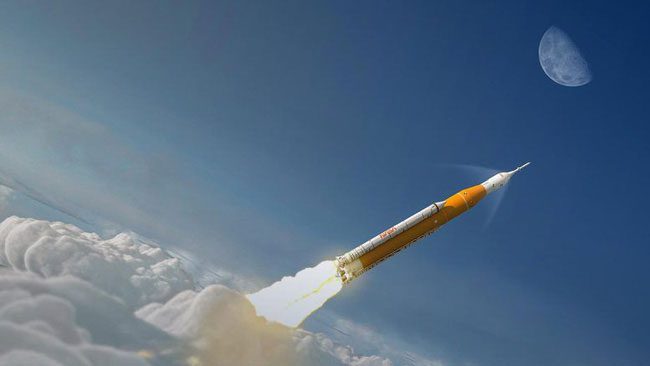
The Artemis I mission lasted over 25 days and concluded when the Orion spacecraft returned to Earth.
On November 16, after several delays, the mission’s two vehicles, the Orion spacecraft and the Space Launch System (SLS) rocket, launched into orbit, marking a significant milestone in NASA’s journey to return humans to the Moon.
The Artemis I mission lasted over 25 days and concluded when the Orion spacecraft successfully splashed down in the ocean off the coast of Baja California, Mexico, at 12:40 AM on December 12. The mission did not include any actual astronauts, only several mannequins used to collect data. The spacecraft soared through the thick atmosphere and made a successful landing.
Artemis I is the inaugural mission in NASA’s Artemis program, which aims to establish a sustainable human presence on the Moon. Therefore, demonstrating that the Orion spacecraft can safely travel to the Moon and return is critically important. Following the success of Artemis I, NASA will analyze the data collected during the flight and select the crew for the Artemis II mission, scheduled for 2024. The crew will be announced in early 2023.
Artemis II is set to carry the crew on a similar trajectory to Artemis I, orbiting the Moon without landing on its surface. Astronauts will land on the Moon during the Artemis III mission planned for around 2025.
Russia Plans to Withdraw from the International Space Station (ISS)
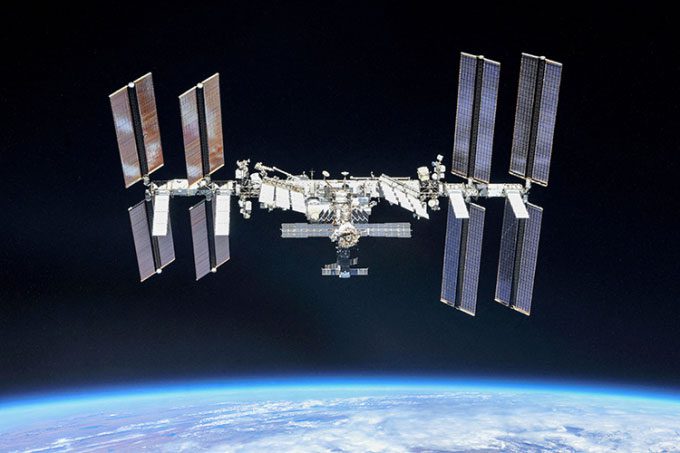
The International Space Station (ISS) photographed by members of Expedition 56 from a Russian Soyuz spacecraft on October 4, 2018. (Photo: Reuters)
On July 26, Russian Deputy Prime Minister Yuri Borisov, who is also the head of the Russian space agency Roscosmos, announced that Russia plans to withdraw from the International Space Station (ISS) after 2024 to focus on building its own space station. This announcement came amid rising tensions between Moscow and the West due to the ongoing conflict in Ukraine.
However, NASA’s space operations director, Kathy Lueders, later stated that Russian officials informed NASA that Roscosmos intends to continue cooperating until its new space station, named Ross, is operational. NASA has not yet received official confirmation regarding Russia’s withdrawal.
Subsequently, Vladimir Solovyov, the executive director of the Russian segment at the ISS, confirmed that Russia must remain at the ISS until Ross is operational. Solovyov anticipates that Ross will be fully assembled by 2028, while NASA aims to keep the ISS operational until 2030.
The ISS is a science laboratory the size of a football field, orbiting Earth at an altitude of approximately 400 km. It was initially designed for Roscosmos and NASA to jointly manage critical aspects of the space station’s operations. For instance, Russia controls the station’s propulsion control system, providing regular thrust assistance to keep the ISS in orbit. Without Russian support, this system would need to be handed over to NASA or replaced.
China Completes Tiangong Space Station
The core module Tianhe of the Tiangong space station was launched into space on April 29, 2021, using a Long March 5B rocket. This module serves as the command and control center of the space station. It provides the thrust needed to maintain the station’s orbit while also controlling the working conditions inside. Tianhe measures 16.6 meters in length, with a maximum diameter of 4.2 meters, and a launch weight of 22.5 tons. This module also features approximately 50 cubic meters of living space, which is the primary habitat for astronauts.
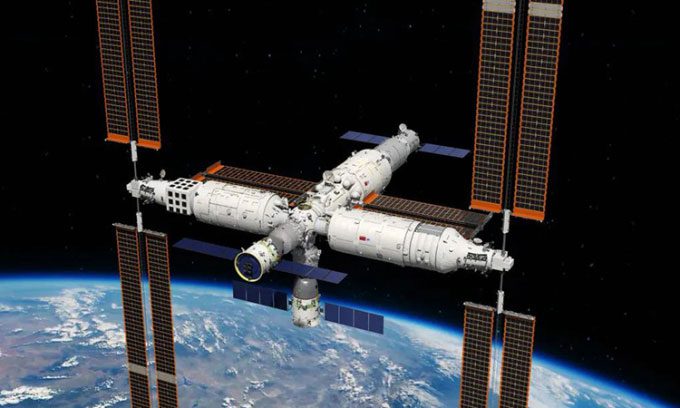
Illustration of the Tiangong space station with a T-shaped structure consisting of three basic modules. (Photo: CMG).
The second module, Wentian, was launched on July 24, 2022, and successfully docked with Tianhe the following day. This module is 17.9 meters long, has a maximum diameter of 4.2 meters, and a launch weight of 23 tons. Wentian serves as a laboratory module, primarily for scientific research on life in space. It is equipped with a laboratory cabin for ecology, biotechnology, and gravity science, and features a robotic arm.
The third module, Mengtian, was launched on October 31, 2022. This laboratory module is 18 meters long and weighs 23 tons. Compared to Tianhe and Wentian, Mengtian is equipped with more research facilities and will support a range of physical experiments in a microgravity environment.
China took less than two years to complete the T-shaped main structure of the Tiangong space station with the three modules: Tianhe, Wentian, and Mengtian. The Shenzhou 12 crew were the first to travel to the Tiangong space station in June 2021. Subsequently, the Shenzhou 13 and Shenzhou 14 crews also safely visited and returned. Currently, the station is managed by the Shenzhou 15 crew.
It is expected that the Tiangong space station will host more than 1,000 scientific experiments throughout its operational duration, including an international project between the China Manned Space Agency (CMSA) and the United Nations Office for Outer Space Activities. While the International Space Station (ISS) is likely to deorbit around 2030, the Tiangong station may continue to expand with new modules.
James Webb Telescope Becomes Operational
The James Webb Space Telescope is designed to replace the Hubble Space Telescope. The focus of the telescope is a primary mirror measuring 6.5 meters wide, composed of 18 smaller hexagonal mirror segments made of beryllium coated with gold and optimized to reflect infrared light from the most distant regions of the universe. The primary mirror of James Webb is 2.7 times larger than Hubble’s, with an improved sensitivity 100 times greater.
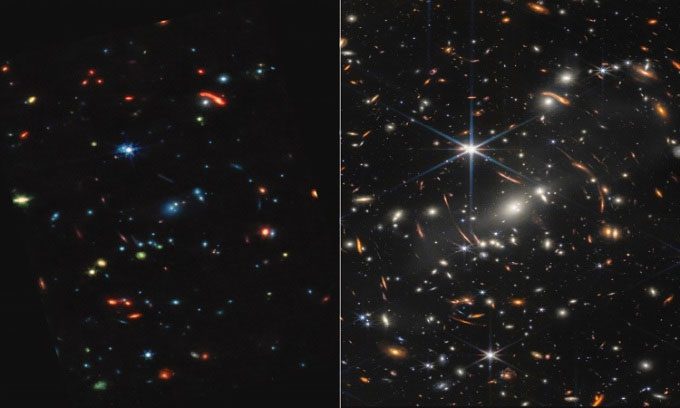
Deep space image captured by James Webb. (Photo: NASA).
After its launch on December 25, 2021, James Webb successfully became operational in orbit approximately 1.5 million kilometers from Earth, nearly four times the distance to the Moon. Unlike Hubble, which operates in low Earth orbit, James Webb orbits the Sun. Its operational position is near the second Lagrange point (L2) of the Earth-Sun system, where the gravitational forces of the two celestial bodies and the centrifugal force balance each other. After several months of collecting scientific data, James Webb has returned many impressive observations to Earth.
Among these is the deepest image of the universe, showcasing thousands of distant galaxies from 13 billion years ago (redshift). Following this is an image of Neptune, which provides the first detailed observation of its rings in over 30 years.
Thanks to James Webb’s unprecedented sensitivity, astronomers can compare the earliest appearing galaxies with modern galaxies to understand how they developed and evolved.
James Webb is expected to usher in a new era in space exploration with the ability to “look back in time” to explore all stages of the universe’s history, from the Big Bang approximately 13.8 billion years ago.
NASA Successfully Alters Asteroid’s Orbit
The Double Asteroid Redirection Test (DART) spacecraft collided with a small asteroid named Dimorphos on September 26. The mission aimed to test planetary defense techniques in case a large asteroid threatens to collide with Earth, although NASA has not detected any such threats in the near future. The goal of DART was to shorten the orbital period of the larger asteroid Dimorphos by at least 73 seconds, although scientists hoped the impact would yield up to 10 minutes. Initial calculations showed that DART exceeded expectations, reducing Dimorphos’s nearly 12-hour orbit by 32 minutes.
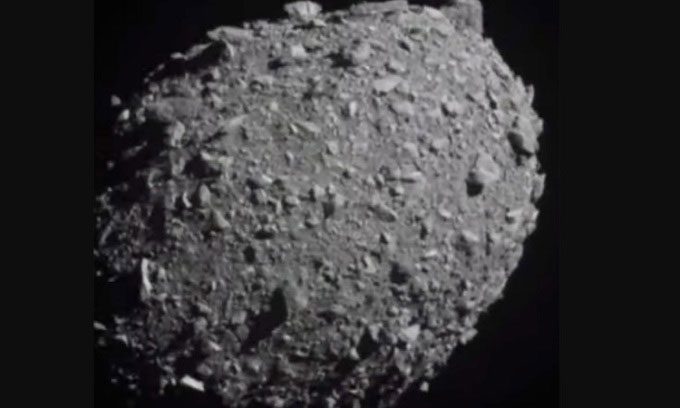
Image of the asteroid Dimorphos seconds after being struck by the DART spacecraft. (Photo: NASA).
The collision marks an initial success for the mission. The DART mission team will collect more data on Dimorphos’s orbit, with observations continuing into the next year. The European Space Agency plans to launch the Hera spacecraft in 2024 to explore Didymos and Dimorphos in greater detail.


















































